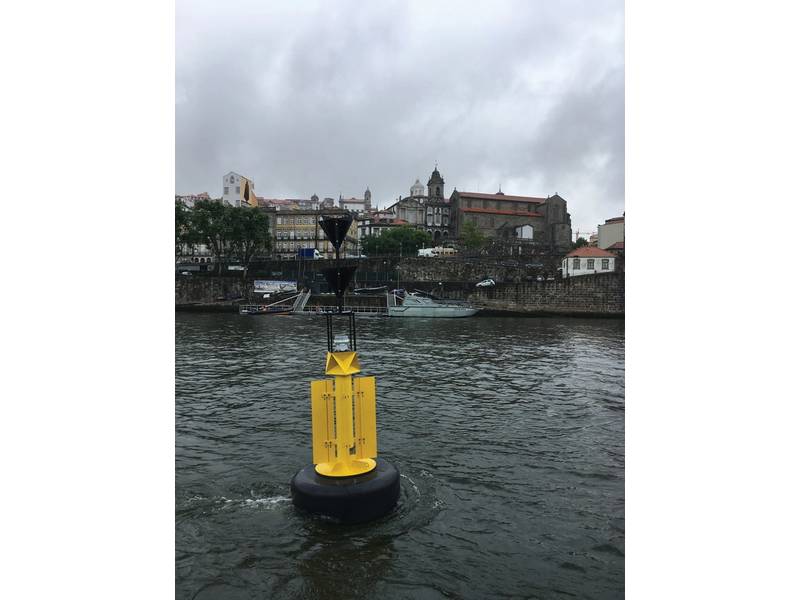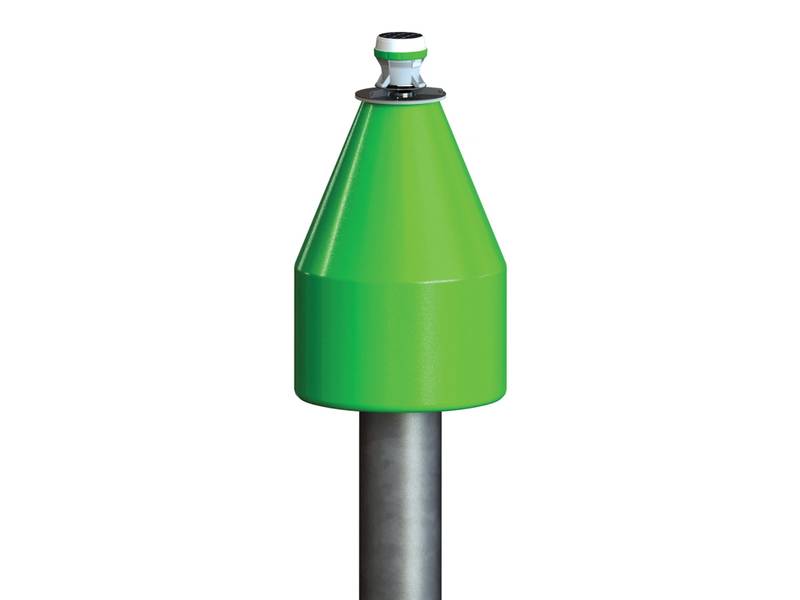Case Study: Floating top marks for piles in flooding rivers
Grupo Lindley was approached by Administração dos Portos do Douro, Leixões e Viana do Castelo in Portugal to improve the reliability of the aids to navigation in the Douro River. Along this stretch of navigable waters there are many piles that when the river floods become totally submerged.
In conjunction with Instituto Hidrográfico (Portuguese Navy), Almarin together with sister company Lindley in Portugal has been working on a topmark that performs as a buoy floating off from the pile in high water. The goal was to design a day mark that would function normally during the navigation season, however, it would also have a greater chance of survival during the winter floods. The result of a successful implementation will be lower operational costs of the channel whilst increasing safety to navigation.
Flooding Rivers
In channels or rivers marked with piles as aids to navigation beacons, where the water level variation is high, defining focal plane is not straight forward. A high focal plane increases cost and may hinder night time visibility. Beacons with a low focal plane run the risk of being fully submerged when the water levels rise.
During flooding above focal plane the beacons will not be visible and the waterway will no longer be navigable under these conditions as the beacons themselves become submerged obstacles. Top marks and lights will probably be damaged and, following the floods, beaconing must be inspected and repaired to restore full navigability of the channel, which implies cost and delay in the river operational navigation.
The use of buoys vs. floating top marks
Buoys are an excellent solution for river channels with a constant flow as their mooring can be designed with a long scope and their movement perpendicular to the axis of the channel will be minimal. In the Douro river Balizamar buoys work perfectly with 3 knots of current. However, when flow is not constant having buoys on long mooring scopes may present a problem due to their swing radius, particularly where there are narrow channels and cross winds.
For this reason, in the Douro river piles are being used in the shallower and narrower parts of the channel, buoys in the deeper and broader parts of the river. Generally, the narrow and shallow sections occur close to dams on the downstream side and deeper water close to dams on the upstream side.
The development hinges around the concept of a floating top mark that acts as a buoy when moored to the top of the pile. When water level rises the impulse of the top mark-buoy will release the unit from the pile at which point it will float away down river until the mooring line is taught.
The unit will then act as a buoy remaining vertical and upright when afloat in low current speeds, although it is improbable the unit will remain vertical in strong currents as the use of counter weights had to be avoided to facilitate replacement. Once water level subsides the maintenance team will have to replace the units on their piles.
Resulting design
This innovative buoy works as a fixed and floating mark and it’s designed for rivers or channels with a high water level variation whilst maintaining a high precision when water levels are low.
The project was selected for presentation under the conferences’ innovation section at the 19th edition of IALA Conference in Incheon (South Korea), which took place in May 2018, and it was presented by Almarin’s general manager and technical director, Patrick Lindley.
Almarin, an IALA industrial member since 2008, presented its new AtoN catalogue too, with a wide offer of buoys, beacons and towers for ports, lantern rooms and solutions for the marking of bridges and structures under navigation channels.


